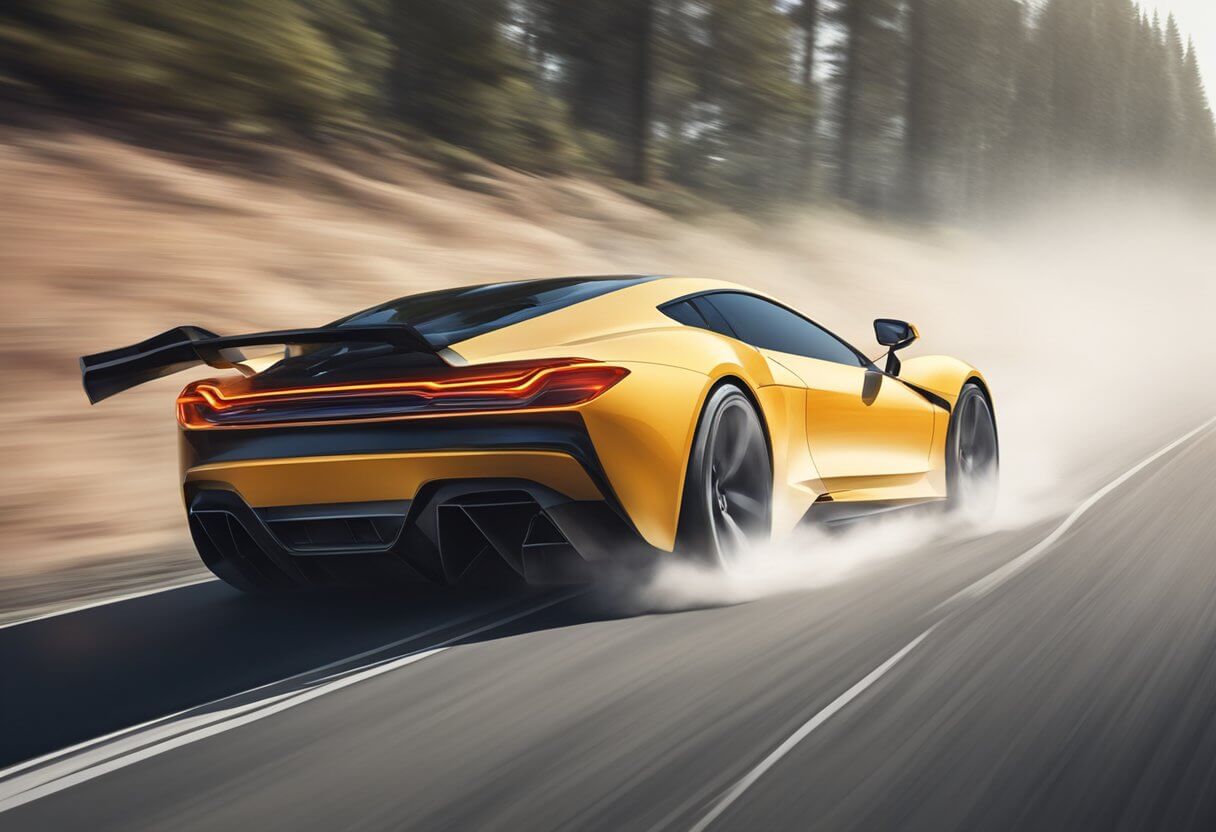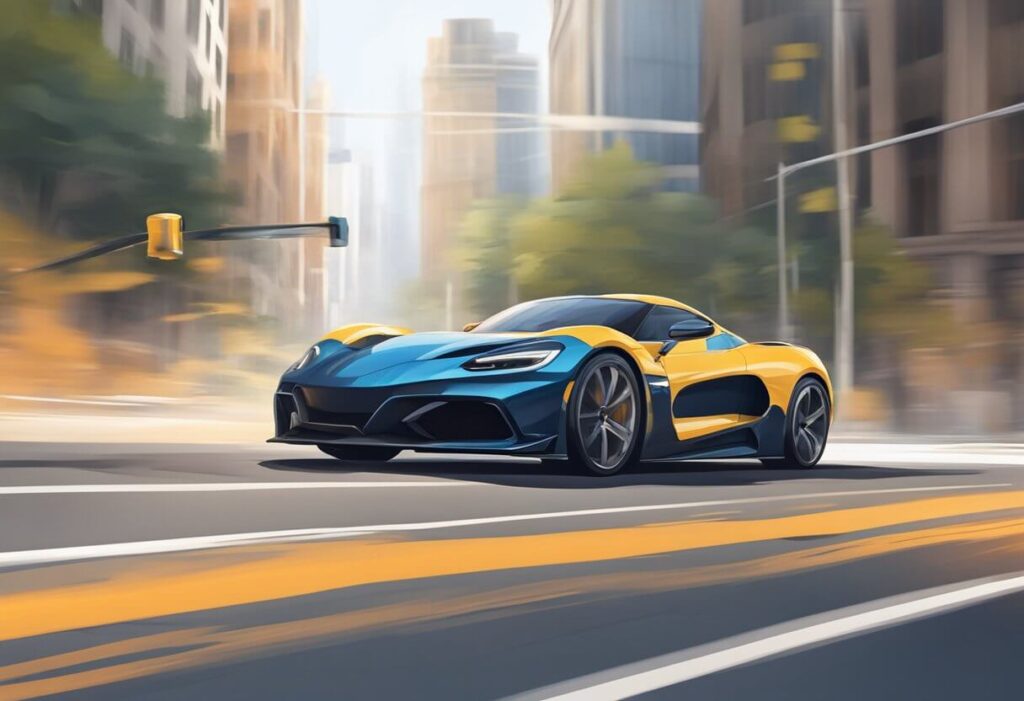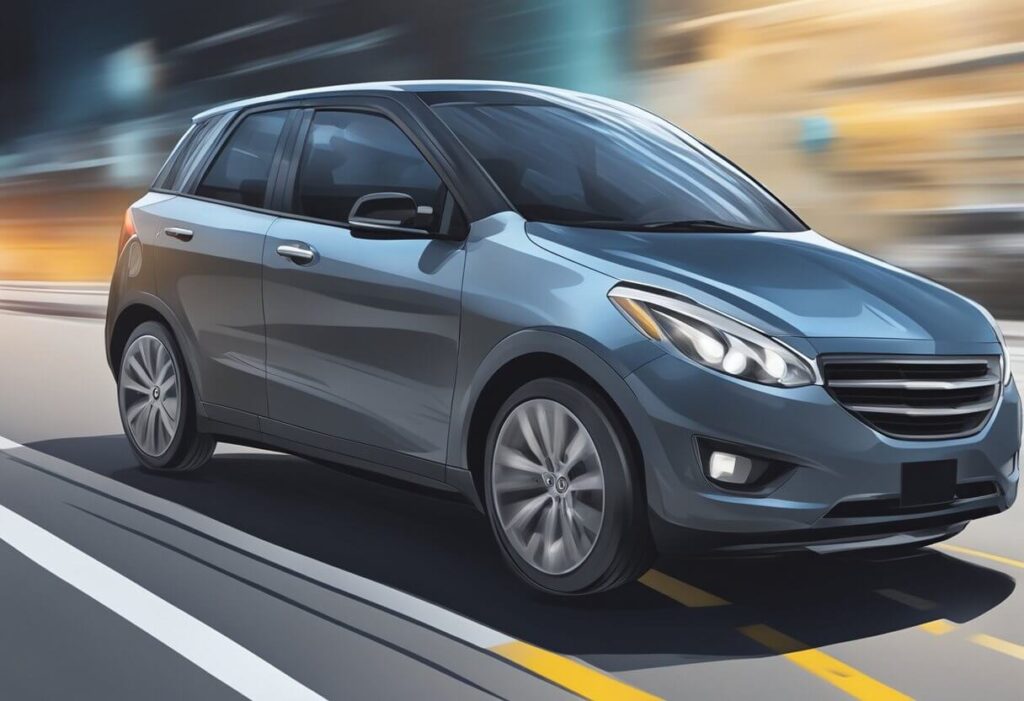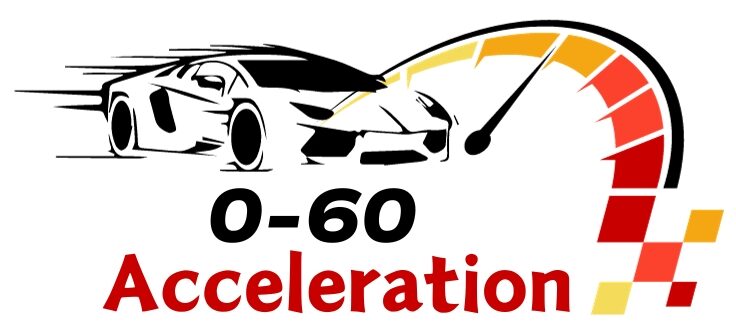
Have you ever wondered just how quick a 0-60 mph time of 5 seconds really is? Is hitting 60 mph from a standstill in 5 seconds fast enough to get your heart racing, or just an average acceleration performance these days?
The 0-60 mph (or 0-97 km/h) time measures how long it takes a vehicle to accelerate from a complete stop to 60 miles per hour. It’s a widely used benchmark for evaluating a car’s straight-line acceleration capability and overall performance potential.
In this article, we’ll explore whether a 0-60 time of 5 seconds should still be considered fast in the modern automotive world. We’ll look at how it compares to typical consumer cars, high-performance vehicles, and even exotic supercars and hypercars. Additionally, we’ll discuss the real-world benefits of quick acceleration, the role of 0-60 times for electric vehicles, and some tips for optimizing your car’s launch performance.
So, is 0-60 in 5 seconds really fast? The answer might surprise you. Let’s dive in!
Understanding 0-60 Acceleration Times
Before we determine whether 5 seconds to 60 mph is legitimately quick or not, it’s important to understand what the 0-60 time represents and how it’s measured.
The 0-60 mph acceleration test is typically conducted on a straight, dry road or track surface. The driver starts from a complete stop, with the engine (or electric motors) at ideal operating temperatures. Upon launching the vehicle using the optimal technique for maximum traction, timing equipment or GPS data loggers record the time it takes to reach 60 mph.
Many factors influence a vehicle’s 0-60 time, including:
- Engine power and torque output: More powerful engines can overcome the vehicle’s inertia more quickly.
- Vehicle weight: Heavier cars require more force to accelerate than lighter ones.
- Traction and drivetrain: How effectively the engine’s power is transferred to the wheels impacts acceleration.
- Aerodynamics: At higher speeds, aerodynamic drag becomes a more significant factor.
Historically, achieving jaw-dropping 0-60 times was reserved for exotic and expensive high-performance cars. In the 1960s, for example, a 0-60 time under 7 seconds was considered blazingly fast.
Is 5 Seconds to 60 mph Considered Fast?

So, where exactly does a 5-second 0-60 time land on the performance spectrum? Is it still considered a seriously quick acceleration rate, or just average in today’s world of powerful cars?
The answer depends on the context and your own perspective:
Compared to typical consumer vehicles: Most mainstream, non-performance cars tend to hit 60 mph in the 5-8 second range. So in this context, a 5-second 0-60 time would be considered very fast and put that vehicle into the “performance car” category.
Compared to modern performance cars: Many affordable performance models like hot hatches, sport sedans, and pony cars now achieve 0-60 times in the low-to-mid 4-second range. In this realm, a 5-second time is still reasonably quick but nothing too extraordinary.
Compared to supercars and hypercars: At the extreme high end of the performance spectrum, the latest supercars and hypercars are capable of surpassing 60 mph in under 3 seconds, and some even slip below the 2.5-second mark. Up against these accelerative beasts, a 5-second time feels almost lethargic.
So in summary, a 0-60 mph time of 5 seconds was once considered blazingly fast and reserved for top-tier performance cars. Today, it’s still a very respectable acceleration rate that puts a vehicle into the modern “sports car” category. However, it no longer represents the cutting edge of straight-line performance.
Why Does 0-60 Time Matter?
You might be wondering: Does straight-line acceleration even matter that much for most drivers in the real world? What’s the practical benefit of having a car that can reach 60 mph in just 5 seconds?
While outright acceleration may not be the top priority for everyone, a reasonably quick 0-60 time does offer some tangible advantages:
Merging and Passing Capability: Being able to get up to highway speeds more rapidly makes merging onto freeways safer and easier. It also improves your ability to execute safe passing maneuvers when needed.
Emotional Driving Experience: Let’s face it – having plenty of acceleration on tap is an integral part of the visceral thrill and emotional enjoyment of driving a performance vehicle. Even if you’re being responsible and obeying speed limits, the capability to rapidly build speed adds to the excitement.
Perception of Performance: For many car enthusiasts, acceleration times are viewed as a simple yet valuable way to benchmark and compare a vehicle’s performance potential.
That said, straight-line acceleration shouldn’t be viewed as the sole measure of a car’s performance capabilities. Attributes like handling, braking, grip, and driver involvement are also critical factors in delivering an engaging, well-rounded driving experience.
Electric Vehicles and Instant Torque
One area where quick 0-60 times have become remarkably accessible is with modern electric vehicles (EVs). Thanks to their instant torque delivery from the electric motors, even affordable mainstream EVs are often capable of sprinting to 60 mph in around 5 seconds.
Some examples of relatively affordable EVs with 0-60 times in the 5-second range:
- Tesla Model 3 Long Range: 0-60 mph in 4.2 seconds
- Kia EV6 GT-Line: 0-60 mph in 3.2 seconds
- Hyundai IONIQ 5 AWD: 0-60 mph in 4.4 seconds
While EVs’ straight-line acceleration is undeniably impressive, it’s debatable whether 0-60 times are the most relevant performance metric for these vehicles. Attributes like efficient range, charging speed, and overall battery performance could be viewed as higher priorities for EV buyers.
How 5 Second Cars Have Evolved?

Looking back at automotive history, any production car capable of reaching 60 mph from a stop in 5 seconds or less was exceptionally rare and limited to ultra-high-end sports cars and supercars just a few decades ago.
For example, in the early 1990s, achieving a 5-second 0-60 time meant owning an exotic machine like the Acura NSX, Dodge Viper, or upper-tier trims of the Chevrolet Corvette. These were expensive, low-volume vehicles aimed at the most avid of automotive enthusiasts.
Fast forward to today, and 5-second acceleration performance has become much more commonplace and affordable across many vehicle segments:
- Sports Cars: Models like the Toyota Supra, Ford Mustang GT, and Chevrolet Camaro can all dip into the 4-second range for 0-60 mph.
- Sports Sedans: Performance-oriented sedans like the Cadillac CT4-V Blackwing, Genesis G70, and Alfa Romeo Giulia Quadrifoglio easily achieve 5-second 0-60 times.
- Hot Hatches: The latest generation of hot hatches, including the Volkswagen Golf R, Honda Civic Type R, and Hyundai Veloster N, are all legitimately quick with 0-60 times in the 5-second bracket.
- Performance SUVs: Even high-performance SUV models like the Dodge Durango SRT Hellcat, Porsche Cayenne Turbo, and BMW X5 M Competition can rush to 60 mph in well under 5 seconds.
So while a 5-second 0-60 time was once the stuff of exotic motoring dreams, it’s now becoming increasingly commonplace and accessible across numerous mainstream vehicle segments and price points.
Is Faster Always Better?
With increasing numbers of vehicles capable of blistering straight-line acceleration, it raises the question: Is chasing ever-quicker 0-60 times a worthwhile pursuit, or does it come with downsides and limitations?
Some potential drawbacks of extreme acceleration capability include:
- Traction and Grip Issues: Maximizing a car’s 0-60 time often requires special tires and traction aids. On normal roads, this can lead to reduced grip and stability compared to less high-performance rubber.
- Increased Wear and Maintenance: Regularly launching a high-performance car and riding the engine to its redline can accelerate wear on components like clutches, transmissions, and brakes.
- Safety Concerns: While breathtaking acceleration is undeniably thrilling, it also raises safety considerations. Inexperienced drivers might find themselves going too fast, too quickly in scenarios where control could be compromised.
Ultimately, excessive straight-line speed is only one facet of overall vehicle dynamics and performance. A well-rounded performance car should integrate capabilities like precise handling, consistent brake feel, aerodynamic stability, and a suspension tuned for both compliance and responsive dynamics.
From an enjoyment standpoint, many driving enthusiasts would argue that a moderately quick car with tremendous driver involvement and engagement can be more rewarding and satisfying in the real world than a cramped supercar with blistering acceleration but numb steering and a rough ride.
Tips for Optimal 0-60 Acceleration

If you do find yourself with a vehicle capable of legitimately quick acceleration to 60 mph, there are some techniques that can help optimize and improve your launch performance:
Use the Proper Launch Technique: For maximum traction off the line, it’s essential to rev-match the engine’s power delivery to the grip levels of the tires. Many performance cars have built-in launch control systems to facilitate this.
Reduce Excess Weight: Removing any unnecessary weight from the vehicle will slightly improve the power-to-weight ratio and acceleration times. Even small reductions in vehicle mass can make a measurable difference.
Consider Aerodynamic Aids: While not a major factor until higher speeds, aerodynamic elements like splitters, wings, and air dams can help reduce lift and drag, potentially shaving a few hundredths off your 0-60 time.
Find a Properly Prepped Surface: Attempting maximum-performance launches on unstable, loose, or low-grip surfaces will severely hamper your acceleration times. A well-prepared asphalt or concrete surface in good condition is ideal.
Of course, it goes without saying that any maximum-performance driving should only be attempted in controlled environments like designated racing circuits or dragstrips – never on public roads where it could endanger yourself or others.
Affordable 5 Second Cars to Consider
So what if you’re in the market for a relatively affordable yet legitimately quick car that can reach 60 mph in around 5 seconds? Here are a few potential options to consider across different vehicle segments:
Ford Mustang EcoBoost (Manual)
- 0-60 mph: 5.1 seconds
- Price : Around $30,920
The turbocharged 2.3L EcoBoost Mustang offers sports car thrills and a 5-second 0-60 time at an affordable price point, especially if you opt for a used model and stick with the manual transmission.
Volkswagen Golf R
- 0-60 mph: 4.3 seconds
- Price (New): Around $45,665
As the premium performance variant of the Golf lineup, the all-wheel-drive Golf R packs a 315-hp punch along with a well-appointed interior. It’s a true dual-threat as both a family hauler and a back-road carver.
Tesla Model 3 Long Range
- 0-60 mph: 4.2 seconds
- Price (New): Around $47,740
Need rapid acceleration along with incredible efficiency and tech? The Model 3 Long Range delivers both in spades thanks to its dual electric motors and instant torque. Just be aware that its range estimates are fairly optimistic.
There are plenty of other intriguing options in this 5-second 0-60 performance bracket, but these three examples hit a respectable sweet spot of acceleration thrills, practicality, and relative affordability.
In Conclusion: A Matter of Perspective
So, is a 0-60 mph time of 5 seconds still considered legitimately fast in the current automotive landscape? The answer: It depends on your frame of reference and expectations.
Compared to the average family sedan or compact crossover, a 5-second sprint to 60 mph is genuinely quick and puts a vehicle into the upper echelon of affordable performance cars. However, for seasoned automotive enthusiasts accustomed to the face-melting acceleration of modern supercars and hypercars, a 5-second time might feel relatively tame.
Ultimately, while numbers and metrics help provide useful benchmarks, the visceral thrill and emotional experience of rapid acceleration is highly subjective. One driver’s “just fast enough” might be another’s “too slow” based on their individual expectations and exposure.
As vehicle performance capabilities continue advancing thanks to powertrain innovations like electrification, numbers that once seemed outrageously quick may soon become commonplace. But at the end of the day, hitting 60 mph in 5 seconds is still pretty darn exhilarating for most drivers – and that’s really what matters most.






